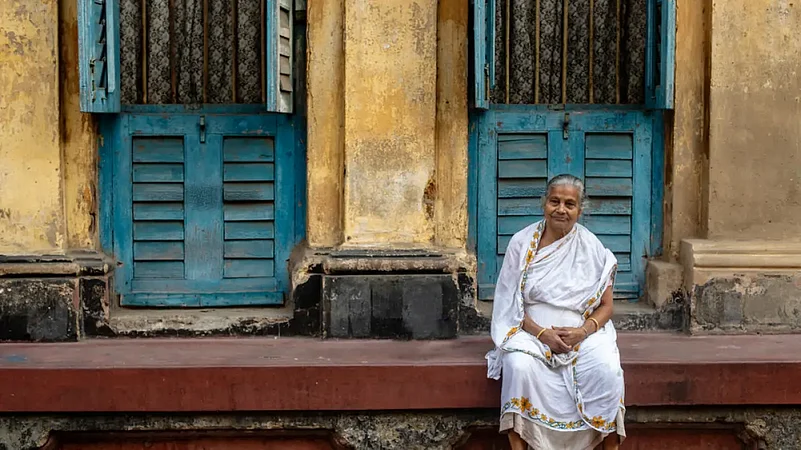Heritage walks have become quite the thing in cities across India. But not many know that it takes months of pretty intense research and planning to make these walks interesting and memorable. Think of a walk you took around a heritage site or a historic district, or even through the lanes of a familiar area in your city. You would have seen the place with new eyes. What makes all these walks come to life is the person who is taking you around, your guide who peppers the walk with annotations of unknown history and interesting stories.
We decided to find out more about what goes into prepping for a heritage walk.
Immersive Trails (IT), formerly called the Heritage Walk Calcutta (HWC), is one such heritage walk company based out of Kolkata that takes curious people on layered explorations through the lanes and bylanes of the city. Heading one of their most sought-after trails, The Chowringhee Architecture Walk, is 28-year-old Anmol Grover. She completed her Bachelors in Architecture and Masters in Building Conservation from the UK in 2018, and joined the organisation soon after. “I am passionate about classic architecture, so this was the perfect job for me," she says. Anmol had initially joined HWC as part of the Messbari Project which documents old boarding houses and lodges of Kolkata. She found the work fascinating and decided to apply for an internship with HWC. “I had zero experience in the heritage field or in tourism, so this was absolutely new for me." She recalls spending three months picking up the craft of conducting heritage walks, and doing research, and then debuted her first walk. She had about 18-20 people in her group that day, and several curious bystanders who were amused to see a woman leading a large group of people around north Kolkata streets.
Speaking about the process Anmol says that walk leaders have the liberty to choose the places they want to feature on the trails, but they have to possess meticulous understanding and detailed knowledge about these places. Once they have decided on the trail, they pitch their idea to the HWC founders and directors. “Since I was looking at an architectural walk, I decided on the Dalhousie Square, Chowringhee and North Calcutta area because that’s where the old heritage and colonial buildings are.”
Part of the prep are numerous recce trips exploring the areas chosen for the walk. “Most of the time what happens is that the information and details that we find while researching doesn’t match the ground reality. So we have to take that into consideration to formulate a comprehensive tour. Guests should not feel a disconnect between what they are seeing and what they are being told.”
The trail leader has to find walkable roads and friendly people in neighbourhoods to talk to, and also ensure that guests on the walk can visit the buildings that they will encounter.
The guide have to also take care of practical needs of all participants. For instance, they have ensure that there are usable public toilets on the walk route, and enough (clean) refreshment stops. They have to choose prominent locations so people can find meeting points easily. Everything needs to be meticulously planned. “At times permissions have to be taken beforehand in order to visit the buildings or take photographs inside. We have to talk to government workers. So a big part of research is all the planning. Our Chinatown Walk depended on the connections we had with the Chinese community and locals living in the area. So in order to get them to speak to our guests, we did an initial recce and talked to them first."
Before the pandemic, HWC’s walks had about 20 people accompanied by the walk leader and two walk assistants. They were generally conducted early in the morning over two to three hours. After the pandemic, they have gone online with several virtual walks via HD-quality videos.
"We have now been able to take Kolkata’s stories on the global platform by going virtual. Our reach has increased tenfold, given the fact that anybody from anywhere in the world can join in," says Anmol.
The organisation has rebranded itself as Immersive Trails and plans on venturing out of West Bengal to cover more places.
"Many participants have said how grateful they are for these virtual tours because it gives them a chance to take them with their family and friends living across different cities and countries. And it has also given a chance to people with mobility issues to participate in our walks.”
After going virtual, some pretty interesting things have happened. "During one of our recent Chinatown virtual walks, we had someone of Chinese origin who attended and whose family had moved to Canada after the incarceration of the Chinese community, post the Indo-China war in the 60’s. So he got to learn about his family’s experiences while they were still settled in India and what had led them to leave the country. He enjoyed that particular walk so much that he has joined almost every other virtual walk we’ve had to offer. It is things like this that make these experiences memorable for us as well.”
Check them out here.









.jpg?auto=format%2Ccompress&fit=max&format=webp&w=768&dpr=1.0)















